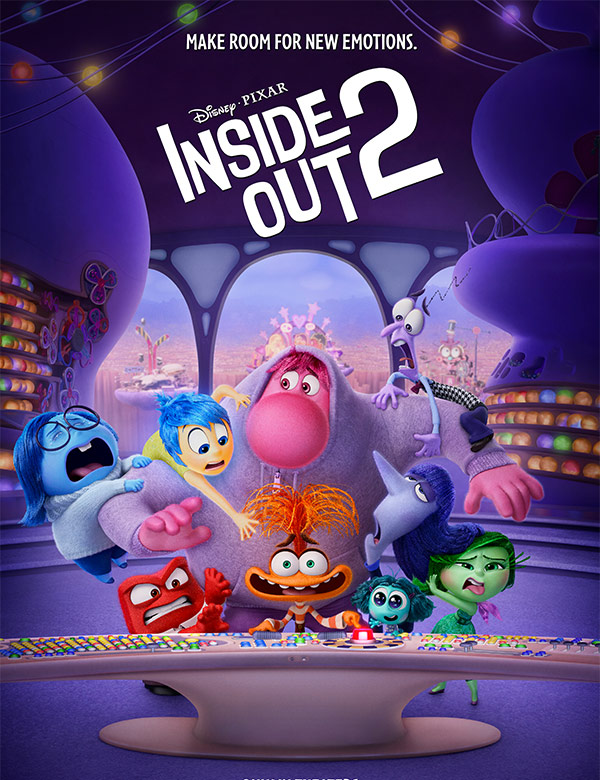A whimsical scene in Disney Pixar’s highly anticipated sequel, Inside Out 2, might best describe the internal conflict of a typical teenager: The personified, animated emotions inside the main character, Riley Anderson, who’s experiencing a range of new emotions as an adolescent, decide to take a wrecking ball to her mind for a complete renovation.

That slapstick scene—and others—reflects the scholarly work and insights of Lisa Damour, child psychologist and lecturer at CWRU’s Schubert Center for Child Studies, who served as a key consultant for the film that premieres today.
Damour has worked with the writers and director on the movie since 2020, when they first reached out to her for guidance on the sequel. In the first meeting, the film’s creators were holding two of her bestselling books Under Pressure and Untangled.
In the movie prequel, the main character was 11, and the five emotions driving the story were sadness, joy, fear, anger and disgust. In the new film, Riley (voiced by Kensington Tallman) is 13 and has a new set of emotions to contend with: anxiety, embarrassment, envy and ennui (also known as boredom).
“What is so brilliant is that this movie captures how a teenager experiences emotions, and that they come on very strong,” Damour said.
Building on the success of the original 2015 blockbuster—of which she wrote a New York Times op-ed—Damour noted the studio’s continued commitment to authenticity and emotional depth in storytelling.
“The work I was doing was exactly what their movie is about—how we think about anxiety and perfectionism,” she said. “This is how psychologists think about those issues and how these emotions intensify in adolescence, which is really what this about.”
As a consultant, Damour provided invaluable insight into the complex world of childhood emotions, helping to ensure the film resonates authentically with audiences of all ages. Drawing from her extensive research and clinical experience, she offered guidance on how children navigate and process their feelings, enriching the film’s portrayal of emotional development.
Damour said she’s hopeful her contributions highlight the pivotal role of psychology in shaping narratives that will resonate with viewers. By blending entertainment with education, she said both installments of Inside Out offer a rare moment in popular culture for audiences to engage with themes of resilience, empathy and self-discovery.
“This is a happy collaboration, one in which kids can learn that sharing emotions is healthy and protective,” she said. “For parents, raising a teenager is lonely, or it can feel that way. I appreciate the way this film captures that. I think this will help parents feel less lonely with the typical aspects of raising teenagers.”
Kelsey Mann, who’s making his feature directorial debut with Inside Out 2, said Damour’s influence on the film is undeniable.
“When we decided we were making a movie about a teen girl and the chaos that comes with adolescence, we knew we needed to talk to an expert, so we immediately called Lisa,” Mann said. “Not only does Lisa have an incredibly empathetic understanding of the emotional lives of teens, she’s a storyteller herself, and that combination of experience and creativity was just what we needed.”
Damour said she expects the movie—featuring an ensemble cast of beloved characters, voiced by Amy Poehler, Maya Hawke, Phyllis Smith and Tony Hale, among others—to leave a lasting impact, sparking meaningful conversations about the importance of emotional intelligence and mental well-being.
“A movie like this has a reach that I will never match in any of the work that I do alone,” Damour said. “This is an international film. Pixar and Disney are incredible platforms with extraordinary reach—which makes it so exciting that they’re telling a story about what is true and natural about adolescence: That it involves intense feelings.
“I just feel so lucky” she added. “Adolescent psychology used to be a niche topic.”
For more information about Inside Out 2, visit Disney Pixar’s official website.


